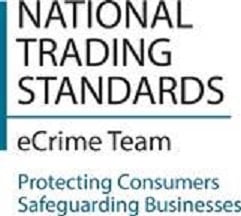April 8th 2014
If you are still running the Windows XP operating system, you will no longer be able to receive support from Microsoft – including critical security updates. Today marks the company's final 'Patch Tuesday' for the software, which includes a critical fix for a zero-day Microsoft Word vulnerability discovered last week.
 If you have one of the estimated one in five personal computers that still run XP – or are one of the three quarters of UK businesses that could still be using it – the software will not stop working, but will be far more vulnerable to online attacks. Cyber criminals make a habit of targeting software which offers the least resistance.
If you have one of the estimated one in five personal computers that still run XP – or are one of the three quarters of UK businesses that could still be using it – the software will not stop working, but will be far more vulnerable to online attacks. Cyber criminals make a habit of targeting software which offers the least resistance.
Microsoft Product Manager Ian Moulster told the Telegraph: "You may think if you have a current anti-virus, anti-malware product, and that’s still supported, won’t I be safe? The answer is unfortunately not, because you need to have security all the way from the operating system up. It will certainly help if you’ve got current and good anti-malware products, but they can’t protect you against everything if the operating system itself has got some kind of flaw in it." He added "XP can be improved and changed over the years to try and cope with that, but it was never designed to do that from the ground-up, whereas something like Windows 8.1 is very much is designed to do that from the ground up."
There are a number of options available to XP users. For those who wish to upgrade to the latest version, 8.1, Microsoft has issued a step-by-step migration guide:
1. Confirm that the machine is running XP. If the home screen hasn’t been personalised you’ll see the familiar XP wallpaper when you boot up, but you can also confirm by clicking the Start button, click Run, type winver, and then press Enter.
2. Choose a new PC. The easiest path to Windows 8.1 is with new hardware and there are offers and deals for consumers out there. Stay up to date on the latest offers on Windows PCs and tablets via the Windows Buying Guide and learn how to choose a new PC.
3. Transfer your files. Microsoft's PCs hold memories full of photos, files and music and that you’ll want to access on a new device. There are several options for transferring files, either using cloud storage or using an external hard drive.
4. Get to know Windows 8.1. Once the right PC has been chosen and files migrated, you’ll be ready to explore Windows 8.1. Follow Microsoft's video tutorials to understand how to get the most out of Windows 8.
Last week it was announced that the government had signed a deal with Microsoft to provide XP support and security updates across the whole UK public sector for a further 12 months.









































